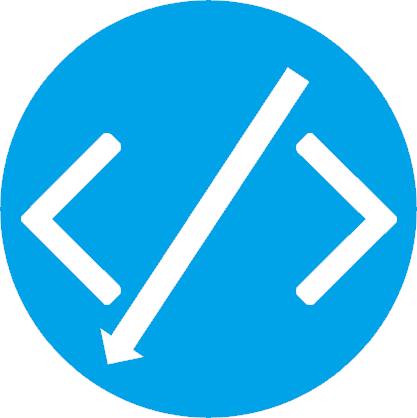Advantages Of Low-Code Application Development In Terms Of Integration Capabilities
Low-code application development offers significant advantages in terms of integration capabilities, which are essential for creating applications that are able to seamlessly connect to different systems and services. These are the main advantages: Pre-built Connectors and APIs:
A Wide Variety of Connectors. Low-code software typically includes many built-in connections to business systems that are well-known (e.g. cloud-based services, databases and CRM). Integration of the systems can be made much easier.
API Integration: Many low-code platforms include integrated APIs that are built-in that let developers easily connect to external services and sources of data.
Usability:
Integrations using Drag and Drop: Integrations can be set up with drag and drop interfaces. Developers and non-developers are able to achieve this without needing to write a lot of code.
Visual Workflow Builders Visual tools to create workflows and data flow aid in understanding and setting up integrations with greater ease.
Standardized Integration Methods:
SOAP and Restful Services: Using standard web service protocols like SOAP and REST makes it easy to connect other systems and applications.
OData and other Standards: The support for standards like OData helps to access and manipulation of data across platforms and applications.
Real-Time Data Synchronization:
Real-time Integrations: Low-code platforms can handle real-time data synchronization between applications and systems, making sure that the data is always current and uniform across the entire organization.
Event-Driven Architect: Certain platforms are equipped with structures that are event driven, allowing applications to react instantly to events. This is essential for interactive and dynamic applications.
Legacy System Integration:
Low-code platforms are frequently utilized to integrate older systems. This enables organizations to modernize IT infrastructures without the need for a complete overhaul of existing systems.
Data Migration Tool: Built-in data migration tools let data be transferred from legacy systems into new applications which are built on low code platforms.
Integration of Third-Party Services:
Cloud Services Integration: The seamless integration of cloud services like AWS Azure, Google Cloud, allows for easy deployment and scaling up of applications.
Business Applications Integration: Low-code platforms are able to connect to various business applications, such as Salesforce, SAP, Microsoft Dynamics, etc. to create a seamless workflow that spans different business functions.
Simplified management of data:
Unified data models: Certain platforms provide low-code support for unified data models to facilitate data management across systems.
Data Connectors - Pre-configured connectors which provide simple access to, as well as manipulation of data from diverse sources.
Security and Compliance
Secure Integrations: Low-code platforms guarantee that integrations adhere to security protocols as well as standard security standards, securing data in transportation as well as during rest.
Compliance Features: These platforms often have features to ensure that integrations comply with regulations (e.g., GDPR, HIPAA), providing assurance for companies dealing with sensitive data.
Extensibility:
Low-code platforms often meet complicated integration requirements by incorporating custom code or scripts. They allow for flexibility but without sacrificing their ease of use.
Plug-in Ecosystem An ecosystem of extensions and plugins allows integration to be enhanced by allowing users to easily implement new functions as they are needed.
Overall, the capabilities for integration of low-code development platforms makes them an effective instrument for developing efficient, interconnected and scalable apps. They can streamline the process of connecting disparate systems and enhance the flow of data. Companies can make use of existing technology and implement new ones while maintaining a cohesive IT environment. Have a look at the recommended wavemaker.com coding for site info including app dev platform, azure sql, develop mobile application, cross platform mobile development, cross platform app dev, azure sql databases, app dev platform, mobile development platforms, driver jdbc, microsoft azure sql and more.

Benefits Of Low-Code Applications In Safety And Governance
Low-code application design offers many advantages when it comes to security and governance. Both are essential for making sure that apps remain in compliance, safe and properly managed throughout their entire life cycle. Here are some of the key benefits.
Unified management console: Low-code platforms typically have a central administration console where administrators manage all applications and ensure consistent governance within the organization.
Role-Based Access Control (RBAC) The majority of these platforms offer strong access control based on role, allowing administrators to define and enforce access policy. This ensures only authorized users are able to access or modify specific parts of an app.
Compliance and Regulatory Adherence
Many low-code platforms include built-in compliance functions. They are built in line with the standards of the industry, regulations and laws (e.g. HIPAA, GDPR). They offer frameworks and instruments that ensure applications meet the standards.
Audit Trails and Logging: Audit trails, comprehensive logging and logs are usually integrated into businesses which allows them to monitor changes and track access. They can also make sure that the organization is in compliance with external and internal rules and regulations.
Additional Security Measures
Data Encryption. Low code platforms usually have built-in encryption for data, both in transit and during rest. This protects sensitive information.
Security Certifications: Many low-code companies have security certifications (e.g., ISO 27001, SOC 2) that demonstrate adherence to high security standards. This provides an additional level of security to customers.
Automated Security Updates:
Regular Patching and Updates Lowcode platforms generally manage regular updates to security. These patches guard applications against the latest threat without the need for developer intervention.
Security Monitoring: Continuous security monitoring tools are typically included, providing immediate alerts and insight into security concerns that could be a problem.
Data Governance
Data Access Policies These systems allow organisations to create data access rules and enforce these policies to ensure that data is only available to authorized users. They also ensure the data is utilized in a proper manner.
Data Masking and anonymization: Built-in tools for data masking and anonymization can help safeguard sensitive data, particularly in the testing and development environment.
Consistent Application Management
Pipelines for development and deployment Low-code platforms provide integrated pipelines for development and deployment which include security checks. They ensure security is maintained throughout the entire application lifecycle.
Version Control. The integrated version management system helps track and reverse any changes made to the application, while ensuring that its integrity is preserved.
Authorization and User Authentication:
Single Sign-On: Support for SSO and other advanced authentication methods eases the management of users as well as increases security.
Multi-Factor Authentication : Many platforms include built-in multi-factor support, adding additional security when accessing apps.
Policy Enforcement and Compliance Monitoring:
Low-code platforms include policies that are predefined to help organizations implement governance policies and security policies.
Compliance Monitoring Tool: These tools offer continuous monitoring, reporting and analysis of compliance status. It is easier to identify possible issues and take steps.
Integration into Existing Security Infrastructure
Seamless Integration: Platforms using low-code are designed to seamlessly integrate with tools and infrastructure such as SIEM (Security Information and Event Management solutions) and firewalls.
API Security: API security features which protect data and maintain the integrity of applications are built into the API.
Training and the best practices
Guided Best Practices : Many platforms provide guidelines and best practices to assist non-developers comply with security standards.
Some low-code vendors offer security training that helps users build and maintain secure applications.
Overall the governance and security advantages of developing applications using low-code ensure that applications are built and managed in a secure and compliant method. These platforms come with the frameworks and tools needed to protect sensitive data and enforce policies while maintaining the regulatory compliance. View the most popular Legacy application modernization with Low-code recommendations for more advice including mobile development platforms, sso azure, rapid app development, rapid app development, ms azure sql, app dev platform, develop web application, sso azure, app modernization, build a docker container and more.

Low-Code Applications Offer Benefits In Terms Of Collaboration And Workflow
It is a good choice for companies that wish to boost team productivity as well as streamline processes and enhance collaboration. These are the primary benefits.
Unified Development Environment (UDE): Low code platforms create an integrated development environment that enables everyone in the team, including developers and business analysts to collaborate effectively. This reduces barriers and improve communication.
Visual Development Tools - The drag-and drop visual nature of low code platforms allows people who are not technical to take part in the process. This helps ensure that the requirements of business are identified and accurately implemented.
Improved Communication
Real-Time Co-operation: A lot of platforms that have low-code support live-time co-operation capabilities like commenting, editing simultaneously and getting instant feedback. They allow for continuous communication by reducing the amount of time required for back-and-forth discussion.
Shared workspaces: Teams have the ability to work together on shared workspaces where they can edit and discuss project elements. This will ensure that everyone is striving for the same objectives and is on the same level.
A streamlined Workflow Management System:
Tools for managing projects built-in to the platform: Low-code platforms usually come with project management tools integrated which allow teams to organize, track and manage their projects. This includes task assignment as well as progress tracking and deadline management.
Workflow Automation - Automating repetitive tasks or workflows allows teams to concentrate their efforts on more strategic initiatives and tasks which improve the efficiency overall of the organization.
Speedier iteration cycles:
Rapid prototyping: Low code platforms enable rapid prototyping rapid development, iterative development, and prototyping. This enables teams to create applications to test and improve their designs in less time. This allows feedback to be quickly integrated and improvements made rapidly.
Agile Development Support: Supporting agile methods allows teams and individuals to work in smaller increments. This also makes it possible to swiftly adapt to changes.
Accessibility for those who are not developers
Citizens Development: Lowcode platforms enable users of business applications (citizen developers), to create modifications, maintain, and create applications with no programming expertise. This makes it easier for IT teams as well as developers, allowing them to respond faster to the demands of business.
Training and Onboarding: Simple interfaces and comprehensive training materials make it easy for new members to become familiar with the team, enhancing the overall collaboration within the team.
Centralized Documentation and Knowledge Sharing
Documentation is integrated into low code platforms usually come with tools to build and maintain documentation on the platform, making it simple for all project details to be centralized.
Knowledge Repositories. Teams can establish repository of knowledge, with templates and reusable parts. This will facilitate sharing of knowledge and will reduce duplicate work.
Consistency in Standardization
Standardized Components - The use of pre-built, standardized components provides an enduring consistency across the different applications. This makes it easier for members of the team to understand different parts of a specific project and then work on them.
Governance and Compliance: Built-in governance frameworks ensure that all development adheres to the organizational guidelines and regulations, reducing the risk of non-compliance and ensuring that applications meet high-quality standards.
Feedback Loops and Improvement Loops
Integrated Feedback Systems: Low-code platforms provide integrated feedback systems that enable users to provide feedback on the applications. Feedback can later be utilized in the creation of the applications.
Continuous Improvement: The capability to quickly test and deploy changes based on feedback will ensure that the software is continuously developed, while being in tune with the goals and needs of the users.
Visualization, Reporting and Analysis:
Real-time Analytics: In-built analytics and reporting provide real-time insights into project performance, user interactions and progress. Data-driven decision-making is feasible.
Visual Workflow Mapping: Visual tools used to map workflows can be used by teams to optimize workflows. This allows them to identify the bottlenecks, as well as areas to improve.
In terms of collaboration, low-code software is a great way to streamline workflows, bring different teams together and automate tasks. This results in a more collaborative, agile and productive developing environment that produces more efficient and high-quality applications.

Comments on “Great Facts To Selecting application development with Low-code platforms”